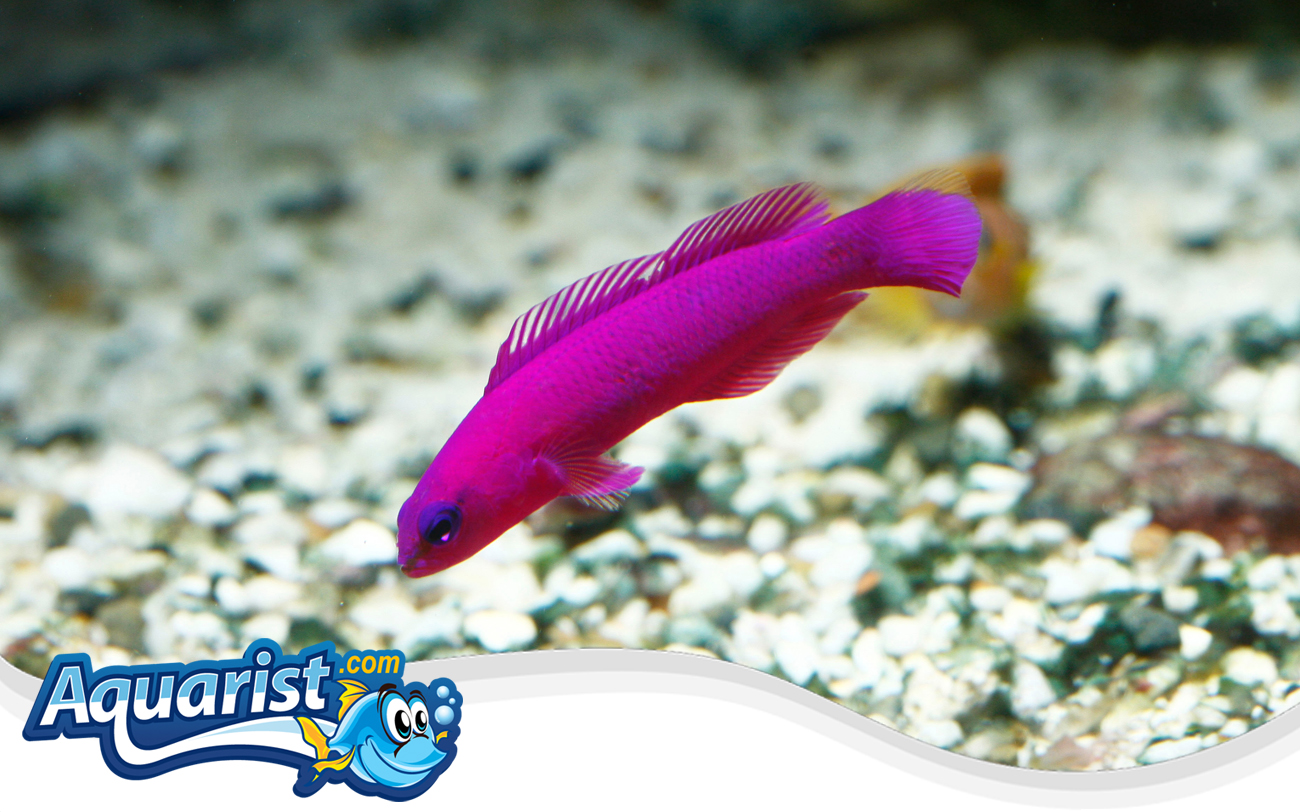Overview
- Native to the Red Sea, often found in coral reefs and rocky crevices.
- Known for its vibrant, deep purple or orchid coloration, making it popular among marine aquarists.
- Displays bold, inquisitive behavior while being less aggressive compared to other dottybacks.
- Suitable for aquarists ranging from beginner to advanced due to its hardy nature and adaptability.
Feeding
- Carnivorous diet; naturally feeds on small marine invertebrates and crustaceans.
- Readily accepts various aquarium foods, including mysis shrimp, brine shrimp, finely chopped seafood, and high-quality marine flakes or pellets.
- Multiple small feedings daily are recommended to maintain optimal health and vibrant coloration.
- Dietary variety is important for nutritional balance and overall health.
Habitat
- Thrives in medium-sized aquariums (minimum 30 gallons) with numerous hiding spots and structured live rock.
- Stable, mature aquarium conditions essential for long-term health.
- Provide plenty of caves, crevices, and rockwork to mimic their natural reef environment.
- Moderate water flow and efficient filtration are key to maintaining optimal water quality.
Fish Care
- Preferred water temperature: 72-78°F (22-26°C).
- Recommended pH: 8.1-8.4; specific gravity: 1.020-1.025.
- Hardy species but sensitive to abrupt changes; regular monitoring and consistent aquarium maintenance important.
- Watch closely for signs of marine diseases and parasites; prompt treatment ensures continued health.
Compatibility
- Semi-aggressive but generally less aggressive compared to other dottybacks; suitable for community aquariums with similarly sized species.
- Reef-safe; generally safe with ornamental shrimp and other invertebrates.
- Ideal tank mates include clownfish, peaceful wrasses, gobies, blennies, and dwarf angelfish.
- Territorial; best kept singly or in pairs if sufficient space is provided.
Aquarium Behavior
- Active and curious, often exploring and swimming through reef structures.
- May exhibit mild territorial behavior, especially towards similar-sized or shaped fish.
- Providing ample hiding spaces and clear territories helps reduce potential aggression.
- Engages actively with aquarium caretakers, particularly during feeding.


